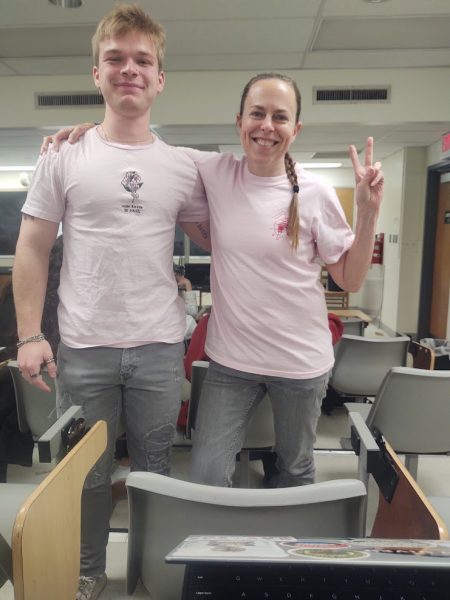Editorial: Medical cannabis bill in West Virginia step in the right direction, but improvements needed
Just a day before 4/20, West Virginia Gov. Jim Justice signed a bill that kick-starts a medical marijuana industry in the Mountain State, making West Virginia the 29th state to pass a law regarding the usage of medical cannabis.
In the epicenter of the opioid crisis (the Charleston Gazette-Mail writer Eric Eyre reported 780 million painkillers were poured into West Virginia in a year), one would assume medical marijuana would be a lifesaver for our state, but there are still rabid misconceptions surrounding this viable form of medicine and how the law would actually operate in West Virginia.
Most would assume that medical marijuana is a highly potent form of cannabis, one that floods the mind with chemicals, making users give over their free will entirely – this is certainly not the case. While there are a lot of chemicals in the plant itself (483 according to Americans for Safe Access), the most active of those chemicals are a group of 66 called cannabinoids. Specifically, the most present one is delta-9-tetrahydrocannabinol or THC. THC is responsible for cannabis’ mind-altering effects, however light or heavy they may be. Various cannabinoids are responsible for pain-numbing affects – one of many valid reasons medical marijuana is introduced into a state.
The medical marijuana bill for West Virginia states verbatim “The only types of medical cannabis allowed initially are pills, oils, gels, creams, ointments, tinctures, liquid, and non-whole plant forms for administration through vaporization. Dispensaries cannot sell edibles, but medical cannabis products could be mixed into food or drinks by patients themselves. Vaporization (or oils) is allowed, but smoking is prohibited.
Patients may only obtain a 30-day supply of cannabis at a time. It is not clear who will determine the definition of a 30-day supply. Ambiguities are often common when it comes to laws like these. It is hard to say exactly what our lawmakers mean by ‘non-whole plant forms’ of marijuana or exactly how much a 30-day supply of marijuana really is, but it is definitely known that patients cannot cultivate their own marijuana within the comfort of their own homes.
Albeit buying into a serious grow operation would be a heavy investment (roughly $940 for a small indoor grow op confided to a closet, according to Leafly) buying medicine from a state regulated dispensary may prove more costly depending on the severity of someone’s condition and how often they need to medicate.
If patients wanted to have an op similar to the aforementioned one, it would reduce their cost of a gram of cannabis to $3.90 according to Leafly, as opposed to the $10 to $20 they would be spending in a dispensary – which West Virginia is only allowing 30 of to operate within the state in addition to 10 growers and 10 processing facilities.
Dispensaries in the state are also not permitted to sell edibles, a popular and often potent form of marijuana, typically consumed a lot as opposed to smoking – Colorado sold roughly $28.7 million in edibles in 2016 according to Marijuana Business Daily. While patients won’t be able to buy professionally made edibles, they should be able to concoct them at home, but nowhere near as effectively as a privately owned business would.
CBD’s and THC bind to fats in food between 200-220 degrees Fahrenheit – while some patients can most likely manage a task like making their own edibles, what’s to say an ambitious patient who may be facing challenges when it comes to mobility may not have an accident while trying to make high quality edibles at home? It may be a stretch, but nothing is impossible, especially if patients are familiar with the effectiveness of edibles elsewhere.
To make matters a little more difficult for patients, those interested in medical cannabis as a medicine must be treated by a physician for at least six months at the time of certification. Those who are in dire need of an alternative to big pharmaceutical medicines need to act accordingly, with speed to guarantee fast and easy access to this new medicine. More problems arise when the idea of transporting the medicine comes up, seeing as there could possibly be different laws county to county, declaring different parameters for how much patients could carry or buy between areas like Kanawha and Logan counties.
Lastly, West Virginia’s medical marijuana program won’t really roll out until July 2019, when patients are allowed to receive identification cards required to purchase their medicine. The Associated Press reported that at least 818 people died of drug overdoses in 2016 and a quick search of the word “overdose” on the Herald-Dispatch’s website reveals 257 stories pertaining to overdoses from Jan. 1 to April 24. Some people are simply not going to make it until 2019. Citizens who have never dealt with drug addiction probably don’t realize it can be a real life or death experience – one’s will to live can easily be sapped by toxic influences introduced by the self.
As far as effectiveness is concerned, it’s really up in the air as to if West Virginia’s medical marijuana law could really implement change in regards to both drug addiction/death and the budget deficit, but the possibility is most certainly there, albeit strained due to internal meddling from West Virginia’s lawmakers. Medical marijuana’s future could be bright in the state and could even lead to recreational marijuana in the coming years. That is to say, if lawmakers make the conscious decision to focus on the people they work for as opposed to decaying industry, or whichever big company is depositing the biggest checks in their respective bank accounts.
Your donation will help continue the work of independent student journalism at Marshall University. If you benefit from The Parthenon's free content, please consider making a donation.






Duane • Apr 25, 2017 at 2:06 pm
This law did not go far enough. People suffering from cancer cannot wait until July 2019. They are likely to be dead and gone. Over 1000 research papers have shown cannabis to be effective in treating cancer.
Waiting two additional years just goes to show that the legislature doesn’t have a clue.